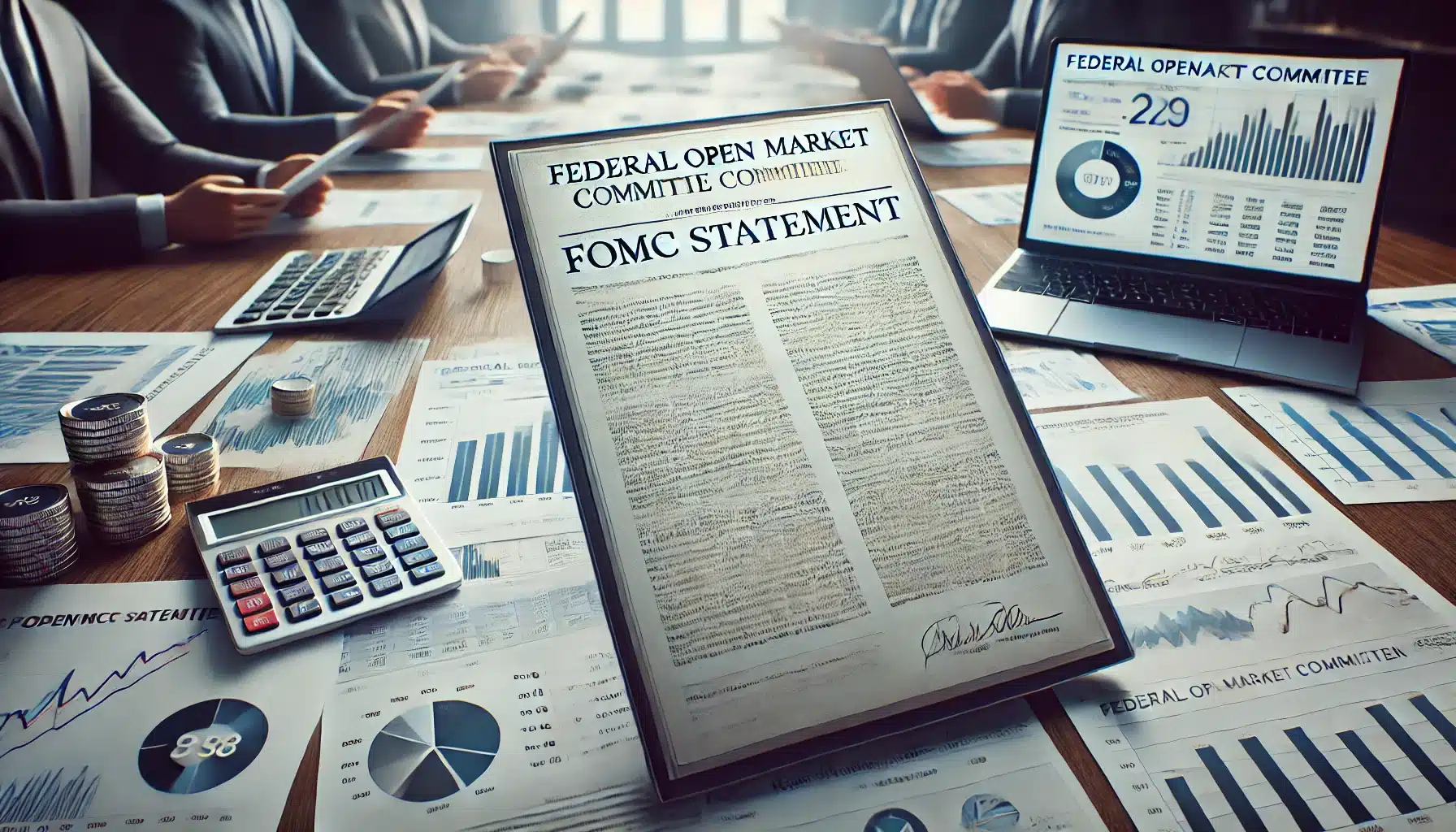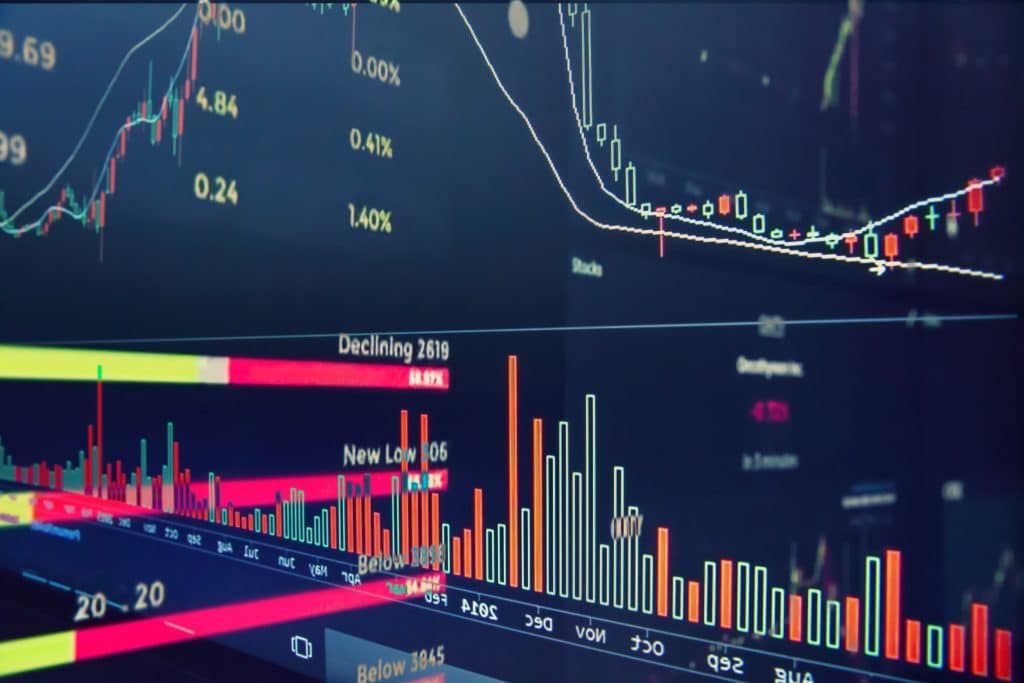Understanding the FOMC Statement and FOMC Press Conference
Understanding the FOMC Statement and FOMC Press Conference
Their Impact on Markets

Introduction: The Power of FOMC Decisions
The Federal Open Market Committee (FOMC) stands as one of the most influential bodies in global finance. Its actions, particularly the FOMC Statement and FOMC Press Conference, are closely watched by economists, traders, and investors worldwide. Understanding the significance of these events and their impact on the markets is crucial for anyone involved in financial trading or investment.
In this comprehensive guide, we’ll break down the roles of the FOMC Statement and FOMC Press Conference, examine how they influence interest rates, market sentiment, and economic projections, and explore strategies to help traders and investors react to these important events.
Understanding the FOMC: The Federal Reserve’s Monetary Policymaking Body
Before diving into the FOMC Statement and FOMC Press Conference, it’s important to understand the role of the FOMC itself. The Federal Open Market Committee is the monetary policymaking body of the Federal Reserve, responsible for setting short-term interest rates in the U.S. economy.
FOMC Composition and Meeting Schedule
The FOMC consists of twelve members:
- Seven members of the Federal Reserve Board of Governors
- President of the Federal Reserve Bank of New York
- Four of the remaining eleven Reserve Bank presidents, who serve one-year terms on a rotating basis
The committee meets approximately eight times per year, with additional meetings as necessary. These regular meetings are crucial for evaluating economic conditions, determining appropriate monetary policy, and adjusting the federal funds rate accordingly.
The FOMC’s Impact on Global Markets
The decisions made by the FOMC directly influence the availability and cost of credit in the U.S. economy, which has ripple effects across global markets. By setting the target for the federal funds rate, the FOMC influences:
- Short-term interest rates
- Long-term interest rates
- Foreign exchange rates
- Stock prices
- Bond yields
- Overall economic growth and inflation
Decoding the FOMC Statement: A Crucial Market Mover
Definition and Purpose of the FOMC Statement
The FOMC Statement is a brief, yet crucial, document released after every FOMC meeting. It outlines the committee’s decision on interest rates and provides an overview of the economic conditions that influenced their decision. The statement typically touches on key indicators such as employment, inflation, and economic growth.
The FOMC uses this statement as a tool to guide market expectations about future monetary policy, making it a powerful market mover.
Key Components of the FOMC Statement
- Interest Rate Decision: This section reveals whether the Federal Reserve has decided to raise, lower, or maintain interest rates.
- Economic Assessment: A summary of the current economic conditions that impacted the FOMC’s decision. It often discusses:
- Employment trends
- Inflation rates
- GDP growth
- Global economic conditions
- Future Guidance: The statement may also hint at the future trajectory of interest rates, which helps shape market expectations.
- Balance Sheet Policy: Information about the Fed’s asset purchases or sales, which can affect long-term interest rates and overall market liquidity.
Why the FOMC Statement Matters to Markets
The FOMC statement is scrutinized by traders and investors for any changes in language or tone, as even minor tweaks can signal shifts in the Fed’s policy stance. For example:
- A shift from “moderate” to “strong” when describing economic growth could indicate a more hawkish stance on interest rates, potentially leading to market volatility.
- Changes in the description of inflation expectations can signal whether the Fed is likely to be more or less aggressive in its rate-setting policy.
- Alterations in the language about global economic conditions can hint at the Fed’s concerns about external factors affecting the U.S. economy.
The FOMC Press Conference: Diving Deeper into Monetary Policy
Definition and Purpose of the FOMC Press Conference
Following the release of the FOMC Statement, the Fed Chair holds a FOMC Press Conference to provide further clarification and answer questions from reporters. The press conference offers deeper insights into the committee’s reasoning and future outlook.
This live Q&A session provides opportunities for the Fed Chair to expand on key issues and explain the FOMC’s stance in greater detail. Traders and investors listen closely for any off-the-cuff remarks or clarifications that may provide additional clues about future policy.
Key Components of the FOMC Press Conference
- Clarification of the FOMC Decision: The press conference typically begins with a recap of the key points from the FOMC statement, providing more context on the interest rate decision.
- Economic Outlook: The Fed Chair often provides a more detailed view of the committee’s economic projections and the factors influencing their decision.
- Questions from Reporters: Reporters ask questions to get more detailed insights into the Fed’s thinking on critical issues such as:
- Inflation trends and expectations
- Labor market conditions
- Global economic risks
- Financial stability concerns
- Forward Guidance: The Fed Chair may provide hints about future policy decisions, which can significantly impact market expectations.
Why the FOMC Press Conference Matters to Markets
The FOMC Press Conference allows the Fed Chair to address ambiguities in the statement and respond to concerns from the financial community. The tone and delivery of these remarks can provide additional signals about future monetary policy, causing substantial market reactions.
For instance:
- If the Chair suggests that inflation remains a concern despite lower-than-expected numbers, markets may anticipate more aggressive rate hikes, leading to volatility in equities, bonds, and currencies.
- Comments about the strength or weakness of various economic sectors can influence investor sentiment towards specific industries.
- Remarks about global economic conditions can impact forex markets and international investments.
FOMC Impact on Markets: Strategies for Traders and Investors
Anticipating Market Reactions to FOMC Decisions
Traders and investors closely monitor both the FOMC Statement and Press Conference for clues about the future direction of interest rates. Understanding the likely reaction to these events can help traders position their portfolios accordingly. For example:
- A hawkish tone in the FOMC statement might lead to a sell-off in equities but support the U.S. dollar and bonds.
- A dovish stance could boost stock markets, particularly growth stocks, while potentially weakening the dollar.
Strategies for Trading Around the FOMC
- Pre-FOMC Positioning:
- Many traders anticipate the likely outcome of the FOMC meeting and position their trades accordingly.
- Example: If economic indicators suggest that the Fed may raise interest rates, traders may short stocks or buy bonds.
- Post-FOMC Statement Adjustment:
- Once the FOMC statement is released, traders react to the news and may adjust their positions based on the language used in the statement.
- Example: If the Fed unexpectedly signals more rate hikes, traders might exit risky assets and move into safe-haven assets like gold or U.S. Treasury bonds.
- Monitoring the Press Conference:
- During the press conference, traders pay close attention to the Fed Chair’s comments, looking for anything that contradicts or clarifies the statement.
- Unexpected remarks can trigger sharp moves in the market, providing opportunities for quick trades.
- Volatility Trading:
- Some traders specifically target the increased volatility around FOMC events, using options or other derivatives to profit from price swings.
Long-Term Investment Considerations
For long-term investors, the FOMC Statement and Press Conference provide critical insights into the overall health of the U.S. economy and future policy direction. By understanding how the Federal Reserve views inflation, employment, and growth, investors can make informed decisions about portfolio allocations.
Long-term strategies might include:
- Adjusting sector allocations based on the Fed’s economic outlook
- Modifying the balance between growth and value stocks
- Reassessing the mix of domestic and international investments
- Adjusting bond portfolio duration based on interest rate expectations
Recent Examples of FOMC Impact on Markets
To understand the power of the FOMC statement and press conference, let’s review a few recent examples of how these events have moved markets:
March 2023 Meeting: Balancing Act Amid Banking Concerns
- FOMC Action: The FOMC raised interest rates by 25 basis points.
- Statement Tone: The statement suggested that future rate hikes might slow due to concerns over economic growth and recent stress in the banking sector.
- Press Conference Impact: The Fed Chair reinforced this dovish outlook, emphasizing the need to balance inflation control with financial stability.
- Market Reaction: This led to a rally in equity markets and a drop in bond yields, as investors interpreted the Fed’s stance as less aggressive than previously expected.
June 2023 Meeting: Hawkish Pause
- FOMC Action: The FOMC kept rates unchanged, implementing a “hawkish pause.”
- Statement Tone: The statement pointed to a strong labor market and rising inflation risks.
- Press Conference Impact: The Fed Chair hinted that rate hikes could resume later in the year, maintaining a hawkish bias.
- Market Reaction: This hawkish tone caused a sharp sell-off in tech stocks, while the U.S. dollar strengthened against major currencies.
September 2023 Meeting: Balancing Inflation and Growth Concerns
- FOMC Action: The FOMC raised rates by 50 basis points.
- Statement Tone: The statement was more balanced, reflecting both inflation risks and concerns about slowing growth.
- Press Conference Impact: During the press conference, the Fed Chair emphasized that inflation remained the top priority, despite acknowledging growth risks.
- Market Reaction: This led to a mixed reaction in the markets, with initial volatility followed by a cautious reassessment of investment strategies.
The Role of FOMC Economic Projections in Market Analysis
Another critical aspect of FOMC meetings is the FOMC Economic Projections, which are released quarterly. These projections provide insights into how the Fed expects key economic indicators to evolve over the next few years.
Key Components of FOMC Economic Projections
- GDP Growth Forecasts: The Fed’s outlook for economic growth in the coming years.
- Unemployment Rate Projections: Expectations for labor market conditions.
- Inflation Projections: Forecasts for PCE inflation and core PCE inflation.
- Federal Funds Rate Projections: Often referred to as the “dot plot,” showing FOMC members’ expectations for future interest rates.
Using FOMC Projections in Investment Decisions
Understanding these projections is crucial for traders and investors as they provide a roadmap for future Fed policy. Investors can use these projections to:
- Align portfolio allocations with expected economic conditions
- Anticipate potential shifts in monetary policy
- Assess the likelihood of reaching the Fed’s dual mandate of maximum employment and price stability
Conclusion: Mastering FOMC Analysis for Trading Success
The FOMC Statement and FOMC Press Conference are two of the most important events in the financial calendar, providing crucial insights into the Federal Reserve’s view on the economy and future monetary policy. For traders and investors, understanding these events and anticipating market reactions can be the difference between success and failure in the markets.
By carefully analyzing the language in the FOMC statement, the tone of the press conference, and the details of the economic projections, market participants can make more informed decisions, positioning themselves to profit from the volatility that often follows these events.
As you continue to develop your trading and investment strategies, remember that FOMC events are just one piece of the puzzle. Combine this knowledge with thorough technical and fundamental analysis, risk management practices, and a deep understanding of your own financial goals to create a robust approach to navigating the complex world of financial markets.
FAQ Section: Quick Answers to Common FOMC Questions
- What is the FOMC? The FOMC (Federal Open Market Committee) is the body within the Federal Reserve that sets U.S. monetary policy, including interest rates.
- How often does the FOMC meet? The FOMC holds meetings approximately eight times per year.
- Why is the FOMC statement important? The FOMC statement provides critical insights into the Fed’s view of the economy and hints at future monetary policy decisions.
- What happens during the FOMC press conference? The Fed Chair elaborates on the FOMC’s decision, provides additional context, and answers questions from reporters.
- How can I use FOMC information in my trading? Traders can use FOMC information to anticipate market moves, adjust positions before and after meetings, and align strategies with expected economic conditions.
Further Reading: Deepen Your Trading Knowledge
- Introduction to Options Trading
- Mastering Butterfly Spreads
- The Power of Diagonal Spreads
- The Power of Iron Condors
- The Power of Vertical Credit Spreads
Elevate Your Options Trading Skills
Ready to master trading options? Join our community for in-depth education on options trading, live trading sessions, and expert analysis of options trading strategies. Sign up today to start profiting from market swings using advanced options trading strategies!
Below are the links:
To your success,

Billy Ribeiro is a renowned name in the world of financial trading, particularly for his exceptional skills in options day trading and swing trading. His unique ability to interpret price action has catapulted him to global fame, earning him the recognition of being one of the finest price action readers worldwide. His deep comprehension of the nuances of the market, coupled with his unparalleled trading acumen, are widely regarded as second to none.
Connect with us:






